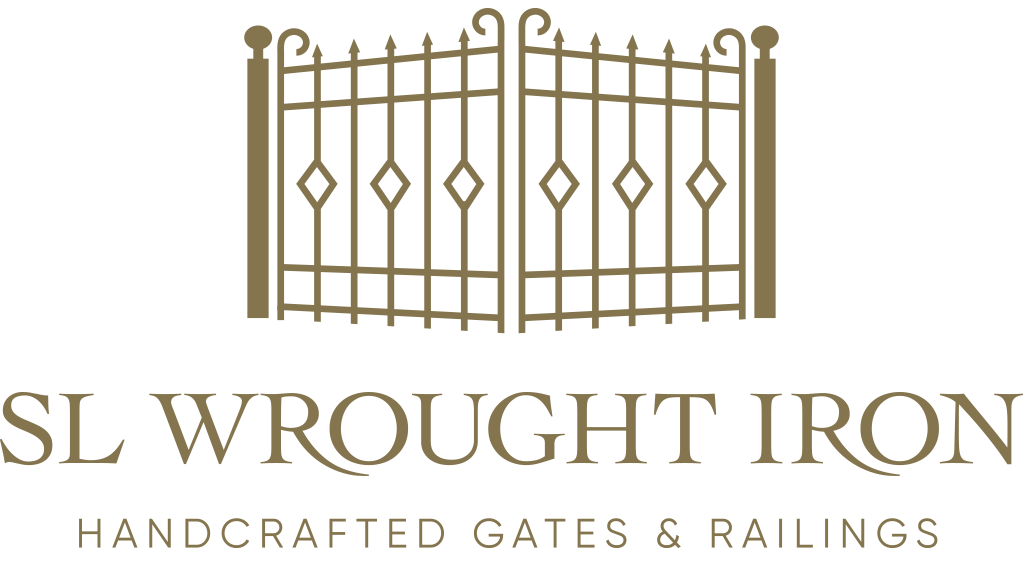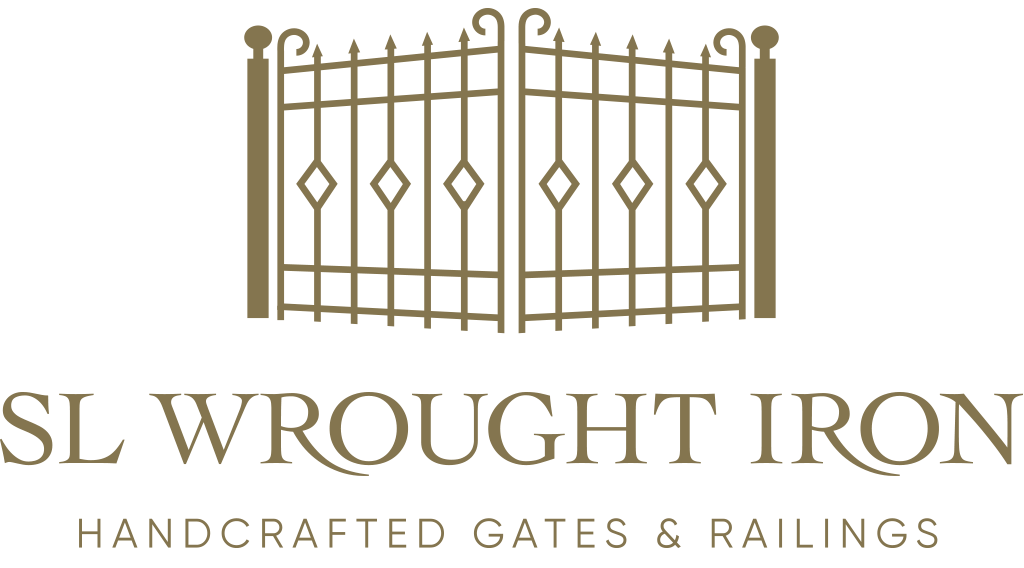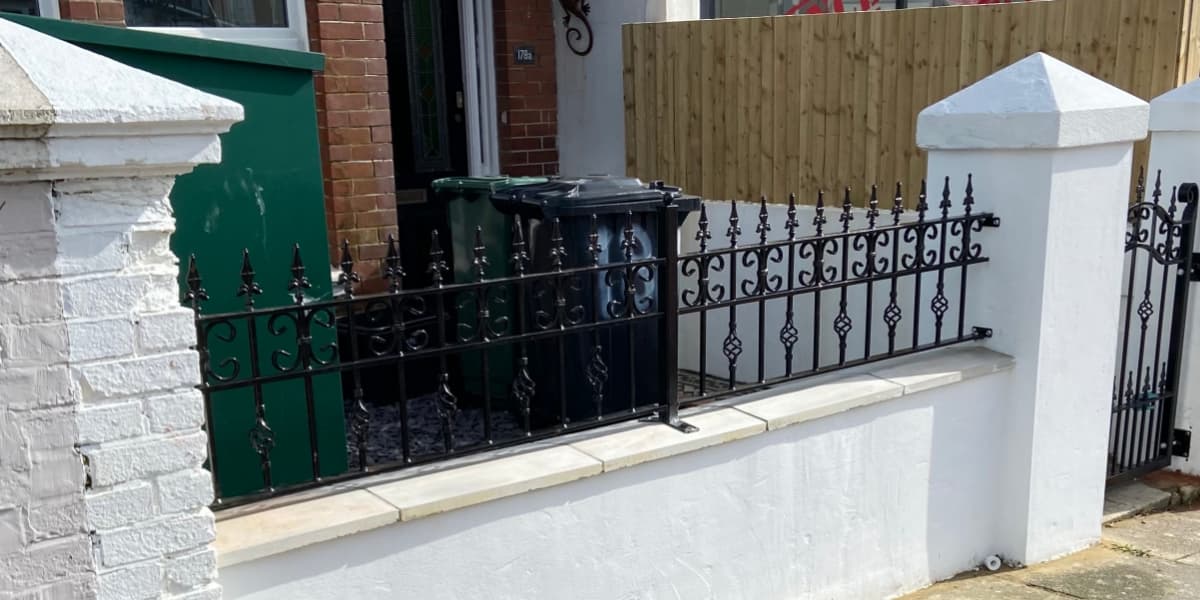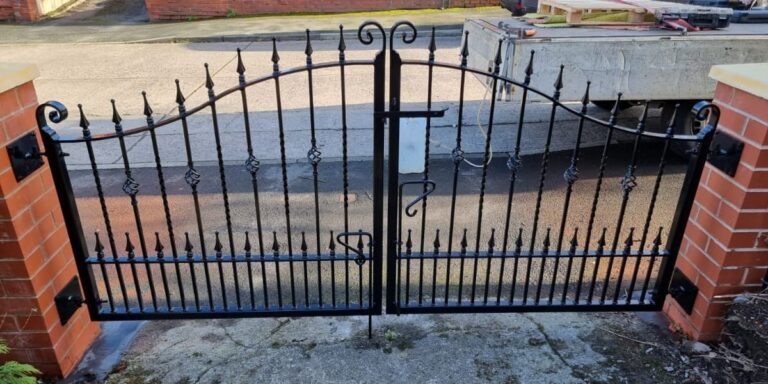Most wrought iron gates and railings spend almost their entire operational lifespan outside, which means that they’re exposed to the most extreme elements the seasons have to offer, all year round. If they don’t get quite enough care and attention, rust can occasionally form. That can undermine their otherwise highly refined and sophisticated appearance, and the visual value they give to your property.
Thankfully, rust is fairly easy to address, and with our own wrought iron metal gates and railings here at SL Wrought Iron, we use a galvanisation and powder-coating process that ensures rust is rarely a problem to begin with. You can find out more about what that involves below – but first, why is rust something to watch out for?
How does rust form, and why is it important?
Rust formation on wrought iron gates is formed through a complex chemical process called oxidation. We’ll spare you the detailed chemistry lesson, but basically what happens is that iron molecules react with oxygen and moisture in the air, which forms iron oxide. This reaction gradually weakens the surface of the wrought iron, leading to the formation of reddish-brown rust flakes.
That can then spread through a continuous cycle of corrosion: essentially, when rust initially forms on a small spot, that creates a weakened surface that’s then more prone to further rusting. Particularly old gates or railings (as in, decades old) are more likely to have uneven coatings or imperfections in the metal, which also make some areas more vulnerable to rust. This localised rusting gradually spreads across nearby areas of the gate, eventually causing corrosion and weakening the overall structure and integrity of the gate.
The presence of rust can also accelerate the deterioration of adjacent components, such as hinges and fasteners, further exacerbating the problem.
How do we prevent rust from becoming a problem at SL Wrought Iron?
We’ve always taken care to ensure that the wrought iron gates and railings that we supply are of the very highest quality, and require minimal maintenance to keep them looking at their very best for longer.
We do this through a process called galvanisation. This involves submerging the railings into molten zinc at a temperature of 449 degrees Celsius, creating a protective coating around the steel. The railings are then cooled and dried, before being powder-coated for an extra layer of protection. This last step utilises electrostatic techniques to apply the powder coating, after which the railing is finally baked in an oven, sealing in the protection from dust and water, and ensuring flawless aesthetics for decades to come.
Once the gate or railing is installed, it should only require minimal maintenance – generally no more than a few times a year – to keep it free from rust. We’ve already penned a quick guide on how to keep your wrought iron gates in pristine condition; you’ll normally need no more than warm, diluted soapy water and a non-abrasive sponge or cloth.
If you have any questions or need any advice about dealing with rust – or indeed any questions about our metal gates and railings – feel free to give us a call on 01254 236994, and we’ll be happy to see how we can help. We have more than 20 years of experience to our name, so you can count on our expert craftsmen to be able to answer your queries in as much or as little detail as you need.
Or, if you’re looking for a brand new set of gates or railings entirely, you can take your pick from our extensive ranges, to suit all styles and settings – from Barnoldswick to Ribchester. Why not take a look around our site, and see what you can find?





